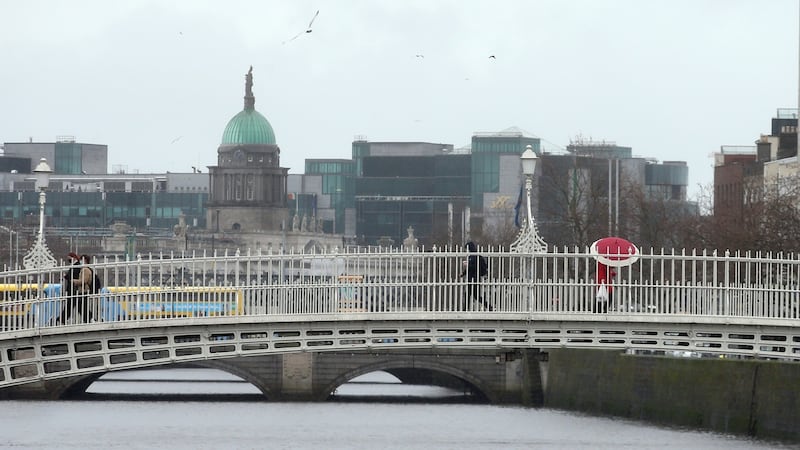New research shows that there has been deeply unequal hit on earned income from the Covid-19 pandemic, as well as the vital role State payments have played in supporting people’s incomes and stopping them getting into debt problems. But it also raises a worrying question – what happens when income supports are gradually wound down for those who are not able to return to work?
1. New findings
Research published this week by two economists – Brian Cahill of the CSO and Reamonn Lydon of the Central Bank – gives fascinating new insights into what happened to people's incomes in the first 2020 lockdown. It looked at what happened to the income people earned from their employer and how this was replaced by the Pandemic Unemployment Payment (PUP) and the wage subsidy scheme.
Had the PUP and wage subsidies not been in place, the researchers estimate that median household income would have fallen by 20 per cent compared to a year earlier. Counting in the supports meant it dropped by just 1.7 per cent. The median income household is the level at which exactly the same number of households are earning more as are earning less. Using this measure removes the distorting impact of a smaller number of very high-income households on the mean average.
The researchers found that earned income fell most for lower income groups – those at the lower end of the earnings league would have seen incomes fall by 20 to 30 per cent in the second quarter of last year had the State not stepped in with special supports. For higher income households, the fall would have been in the 8 to 13 per cent range, on average.
‘We got bad news at the first baby scan – the only scan my husband could attend’
What’s the oldest woman you’ve delivered a baby to, I ask the doctor. Fifty-two, he says
Ireland’s recent Covid-19 suppression must happen across Europe – WHO
‘Vaccine effect’ behind 80% drop in nursing home cases, says HSE official
Clearly, the greatest support was provided by people on lower incomes. However, the research found that a significant number of these live in higher earning households – this means they could be adult children or second earners.
It is also important to note that the estimated losses in the absence of pandemic supports does not include a calculation of who might have qualified for ordinary unemployment benefits. These might have cut the 20 per cent loss by about half at the median level, the researchers said. However in higher income households, many of those out of work might not have qualified for supports.
In quarter three, as the economy reopened, incomes were up 3 per cent year-on-year on an annual basis. However, while many returned to work, many others did not. Take away the pandemic supports and there would have been a 6 per cent fall in median incomes compared to the same period the previous year.
2. The hardest hit
There are good insights, too, into the kind of households that were hit hardest. We know from the PUP data that claimants tend to be younger and be concentrated in generally lower wage sectors such as hospitality and retail.
For households where the main earner was under 30, incomes on average after State supports showed no change in the second quarter of last year, compared to the same period in 2019. However, take away the PUP and wage subsidies and a 36 per cent fall would have been recorded.

This reflects the large number of younger people who were out of work and the low level of average earnings which meant PUP supports often fully compensated, or in some cases left people better off in financial terms.
Incomes of single parent households with children under 18, most of them female, showed a 6 per cent income rise – again illustrating the exposure of this group to sectors which had to close and their low previous earnings. We know from previous ESRI research by Barra Roantree that many of those worst hit were young, lower-income people renting, rather than owning accommodation. The latest research confirms this, showing again that the group renting their accommodation got a temporary boost in income on average of almost 6 per cent, compared to a 25 per cent fall had there been no supports.
3. The debt
While many lower earners worst hit by having no work were renting, there was still a substantial number with mortgage debt – and many had low savings and other non-mortgage borrowings. The story was similar to incomes – State supports protected people and without that many would have been vulnerable. This would have meant a lot more seeking payment breaks from lenders during the lockdown last year.
Looking at the median household, debt service costs rose from 14.2 per cent of gross income to 14.8 per cent, after State supports were counted in. Without supports the figure would have risen to 17.1 per cent, a modest enough rise.
But the real story emerges when you look at higher debt households. For this group,with supports mortgage debt rose from 33.6 per cent of gross income to 36.2 per cent during the first lockdown. But remove the support and the figure rises to 58.6 per cent of gross income. Given that a rough rule of thumb is that one third of income should go on repayments – generally taken as after-tax income not the gross income used in the study – and you can see that without supports many more would have been in trouble and seeking payment breaks.
4. The policy implications
The report shows how the Covid-19 income supports were vital in maintaining incomes, especially for lower income households, and in keeping debt payments manageable. Given the scale of the current lockdown and the fact that the same sectors are affected, something similar will be happening now. While the PUP numbers peaked at 600,000 last year, compared to 471,000 now, together with the wage subsidy scheme, more than 800,000 jobs are supported.
However, the research also raises a big issue for the Government in winding down these general support programmes. They have been extended until the end of June, but the Government has warned that while there will be no sudden closure, they will have to be wound down at some stage. The plan published this week also referred to the need when the worst of the pandemic passes to direct support to companies that have a chance of prospering, rather than propping up those that will not survive.
The economic theory here is that the way we live and spend will change from sectors permanently, meaning they will never return in their previous form. This means some sectors will be smaller and employ fewer people – so State support need to move to supporting sustainable businesses and helping those displaced to retrain and find new jobs.

While this is the theory, the transition will be hugely difficult. As the wage subsidies are withdrawn, jobs will be lost. As the PUP winds down, incomes will fall. The research clearly shows the reliance of many households on the supports and the hit which will emerge as they are wound down. Many will qualify for unemployment benefits, but still face a big income drop. In other cases, the ability to repay mortgage and other debt will be severely affected, with implications not only for those affected but also for the financial system. Those most at risk are those reliant on the supports – younger, lower-income people and single-parent families.
The State has done a good job in protecting people’s incomes, but the hardest decisions now lie ahead.
















